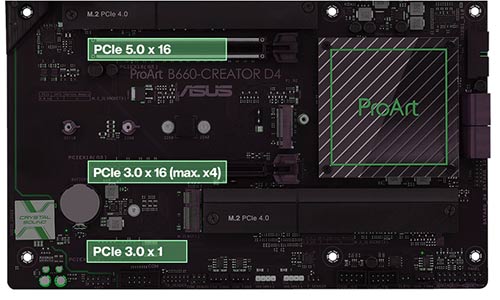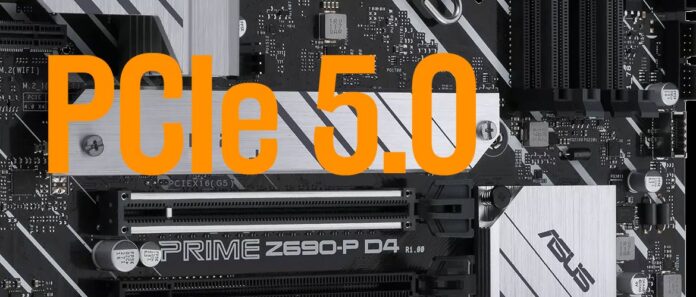While users have just met PCIe 4.0, manufacturers have started to offer PCIe 5.0 solutions. We think that information about the new PCIe technology will be helpful to users who want to renew their systems.
PCIe is a communication bus standard that allows various PC components (graphics cards, expansion cards, storage units, etc.) to communicate with each other. Technical features, specifications, and naming are determined by PCI-SIG (PCI Special Interest Ground).
With each new technology change, these values are redefined and new generation PCIe solutions called PCIe 2.0, 3.0, 4.0, 5.0 are defined. Each new generation offers backward compatibility with previous PCIe versions.
In this way, devices designed for older PCIe versions continue to work with the new generation. Graphics cards with PCIe 4.0 interface or PCIe 3.0 M.2 SSD converter cards will continue to work with PCIe 5.0 systems.
5.0, 4.0 or 3.0, which interface devices should be preferred?
As seen in the table below, each new PCIe version offers twice the bandwidth or transfer speed of the previous one. PCIe Gen 5.0 also offers twice the bandwidth and transfer speed of the previous generation PCIe 4.0.
| x1 One Way Bandwidth | x16 One Way Bandwidth | Maximum Bandwidth in Two Directions | |
| PCIe 1.0 | 250 MB/s | 8 GB/s | |
| PCIe 2.0 | 500 MB/s | 16 GB/s | |
| PCIe 3.0 | 1 GB/s | 32 GB/s | |
| PCIe 4.0 | 2 GB/s | 64 GB/s | |
| PCIe 5.0 | 4 GB/s | 128 GB/s |

What do the speeds in this table mean? In M.2 NVMe SSD drives, models with an x4 interface are generally offered to users. While a PCIe 3.0 x4 model offers a read/write speed of 3,500 MB/s, today’s high-performance SSD drives with a PCIe 4.0 x4 interface can offer read/write speeds of 7,000 MB/s. The new PCIe 5.0 SSD drives, which will offer speeds twice as fast as PCIe Gen 4.0, will offer a data transfer rate of 14,000 MB/s, or 14GB per second. When this speed is compared to the 500MB/s speed of SATA SSD drives still used in many systems, it is better understood how high the transfer rate is.
Another benefit of increased bandwidth is that it allows fewer lanes to be used to provide the same speed. With the transfer speed and bandwidth values doubling, it is possible to get the performance offered by PCIe 4.0 x16 in a PCIe 5.0 x8 slot. In other words, a PCIe 5.0 x8 card can provide the same performance as a PCIe 4.0 x16 card. Thanks to the high speeds offered with fewer lanes, devices with the same performance can be used with fewer PCIe ports.
When Will PCIe 5.0 Be Available?
With the announcement of Intel 12th generation processors with PCIe 5.0 support in October 2021 and their sale in December 2021, PCIe 5.0 started to be used in systems. With the Ryzen 7000 series announced by AMD in August 2022, PCIe 5.0 support also started to be offered on AMD’s side. The systems offered by both manufacturers are PCIe 5.0 interface solutions that offer full backward compatibility for PCIe 4.0 and PCIe 3.0 devices.

Devices with PCIe 5.0 Interface
Motherboard manufacturers have offered many products with PCIe 5.0 support. However, as of September 2022, although PCIe 5.0 graphics card and SSD solutions for enterprise and end users have been announced by different manufacturers, they have not yet been offered for sale. For example, NVIDIA Geforce RTX 4000 series graphics cards or AMD RX7000 series graphics cards will use the PCIe 5.0 interface. Both manufacturers are expected to offer their products to users in the last quarter of 2022. On the SSD side, enterprise drives such as Samsung 1743 and manufacturers such as Apacer, Sabrent, Crucial have announced PCIe 5.0 drive solutions. It is expected that PCIe 5.0 SSD solutions will also be available with the launch of AMD Ryzen 7000 series processors and motherboards compatible with these processors.
Should we switch to PCIe 5.0?
The answer to this question depends on the current system configuration and the intended use of the system. Yes, PCIe 5.0 will come with a major performance increase. And it will provide great convenience for users in many areas. However, this speed increase and convenience are of great importance primarily for professional users and corporate systems. Switching to a PCIe 5.0 system for a user with a PCIe 4.0 supported gaming system will not provide a major performance increase at the moment. Because the GeForce RTX 3090 or Radeon RX6900 graphics card they are using will continue to provide PCIe 4 x16 interface performance. Similarly, Samsung 980 PRO or Kingston FURY Renegade SSD drives will continue to work with PCIe 4.0 speeds.
Another factor affecting users’ decision to switch is cost. In order to use a system with PCIe 5.0 support, it is necessary to have an x-series motherboard. The Intel processor sockets on these motherboards are compatible with 12th generation Intel, and the AMD processor sockets are compatible with Ryzen 7000 series processors. Therefore, the processors need to be changed along with the motherboard. New generation motherboards have DDR5 support as well as PCIe 5.0 support. This means that DDR4 memory cannot be used either. In short, in order to switch to the PCIe 5.0 interface, a new processor, motherboard and memory must be purchased. Considering that these products will initially be offered for sale in limited numbers and at high prices, it can be said that the cost will increase even more.
It is expected that not only PCIe 4.0 but also PCIe 3.0 interface solutions will be on the market for a long time. If you are not a professional user or IT manager who needs high performance, it is not right to rush to PCIe 5.0 transition.


